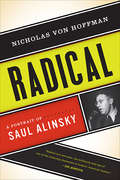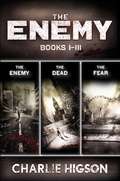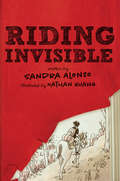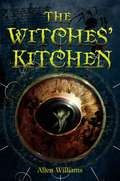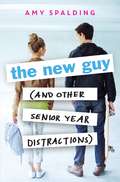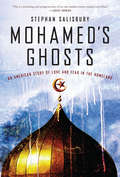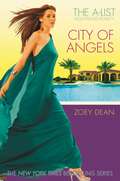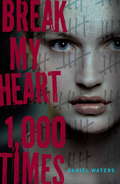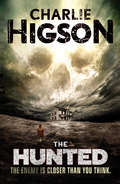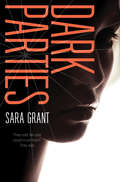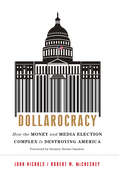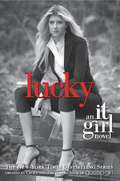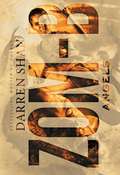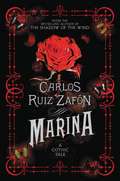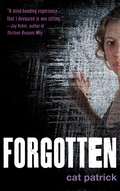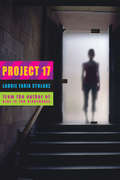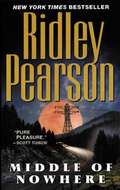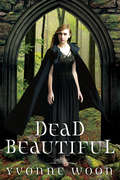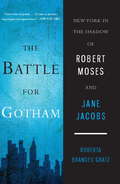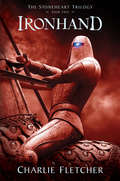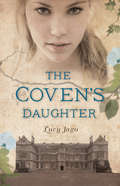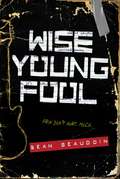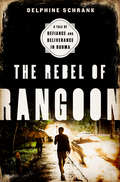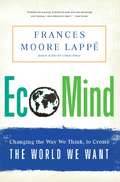- Table View
- List View
Radical: A Portrait of Saul Alinsky
by Nicholas Von HoffmanFrom Left to Right, one man has influenced them all: Saul Alinsky. Radicalis a personal portrait of this controversial mastermind of popular movements, a man who is often called the American Machiavelli. The tactics and strategy of Alinsky, who died in 1972, have been studied by people as diverse as Barack Obama, Cesar Chavez, Hillary Clinton, Dick Armey, the Tea Partiers, and activists and organizers of every persuasion. Thousands of organizations around the country owe their inspiration and origins to Alinsky-who is to community organizing what Freud is to psychoanalysis. As told by his friend and prot g Nicholas von Hoffman, whom Alinsky dubbed “in all the world my favorite, drinking, talking, and thinking companion,”Radicalis an intimate look at the man who made a career of arming the powerless and enraging the powerful. From Alinsky’s smuggling guinea pigs into the Joliet state penitentiary to the famous Buffalo fart-in. von Hoffman’s book reveals the humor as well as the ideals and anger that drove Alinsky to become a major figure in a democratic tradition dating back to Tom Paine. Many of the stories about politicians, bishops, gangsters, millionaires, and labor leaders, which Alinsky did not want made public in his lifetime, are told here for the first time inRadical. Von Hoffman captures Alinsky’s brilliant critique of Dr. Martin Luther King, Jr. ’s organizational tactics and where and why they succeeded or failed. It was a career that began in the politics and violence of the Great Depression and worked its way through the Communist threat, the racial struggles, and the Vietnam War protests of the second half of the twentieth century. The first book to explain why so many have co-opted Alinsky’s ideas, and the first to explain why so many contemporary politicians misunderstand his message,Radicalwill become essential reading for anyone interested in American politics, past and present.
The Rivals (Mockingbirds Ser.)
by Daisy WhitneyWhen Alex Patrick was assaulted by another student last year, her elite boarding school wouldn't do anything about it. This year Alex is head of the Mockingbirds, a secret society of students who police and protect the student body. While she desperately wants to live up to the legacy that's been given to her, she's now dealing with a case unlike any the Mockingbirds have seen before.It isn't rape. It isn't bullying. It isn't hate speech. A far-reaching prescription drug ring has sprung up, and students are using the drugs to cheat. But how do you try a case with no obvious victim? Especially when the facts don't add up, and each new clue drives a wedge between Alex and the people she loves most: her friends, her boyfriend, and her fellow Mockingbirds.As Alex unravels the layers of deceit within the school, the administration, and even the student body the Mockingbirds protect, her struggle to navigate the murky waters of vigilante justice may reveal more about herself than she ever expected.
The Enemy: Collecting The Enemy, The Dead, and The Fear (An Enemy Novel)
by Charlie HigsonWhen the sickness came, every parent, every policeman, every politician...everyone over 16 years old fell ill. The lucky ones died. The rest begin to decompose, becoming crazed, confused, and hungry for young flesh. Now, every child and teen must fight for survival against the ferocious adults who hunt them in packs, like wild dogs. In the first three books of Charlie Higson???s hit series, desperate groups of children in London struggle to find a safe place to live and a way to survive in this new world where death roams the streets.
Riding Invisible
by Sandra AlonzoFifteen-year-old Yancy runs away from home on the night his brother viciously attacks his horse, Shy. With just a backpack, a flashlight, his horse, and a journal, Yancy takes to the California desert on a journey of self-discovery. There he will learn the hardships of being homeless, experience his first kiss, and meet a Mexican laborer, Tavo, who has a thing or two to teach him about life and love. Debut novelist Sandra Alonzo creates an honest portrait of a family dealing with mental disease.
The Witches’ Kitchen
by Allen WilliamsDeep in the walls of a witches' cottage lays an ancient magical kitchen. Dangling over that kitchen's cauldron, pinched between the fingers of two witches, is a toad. And the Toad has no idea how she got there, and no memory of even her name. All she knows is she doesn't think she was always a Toad, or that she's ever been here before. Determined to recover her memories she sets out on a journey to the oracle, and along the way picks up a rag-tag team of friends: an iron-handed imp, a carnivorous fairy, and a few friendly locals. But the Kitchen won't make it easy. It is pitch black, infinite, and impossible to navigate, a living maze. Hiding in dark corners are beastly, starving things. Worse yet are the Witches themselves, who have sent a procession of horrific, deadly monsters on her trail. With some courage and wisdom, the Toad just might find herself yet-and with that knowledge, the power to defeat the mighty Witches. Filled with forty stunning pencil illustrations from the author, the Witches' Kitchen is a rich, well-imagined fantasy setting unlike any other.
The New Guy (and Other Senior Year Distractions)
by Amy SpaldingFilled with romance, rivalry, and passive-aggressive dog walking, Amy Spalding delivers a hilariously relatable story about how even the best-laid plans sometimes need to be rewritten.What's the only thing that could derail overachiever Jules's perfect senior year? Alex Powell--former member of boy-band sensation Chaos 4 All and newest transfer to Eagle Vista Academy. Alex seems cool enough when he starts spending time with Jules. In fact, he turns out to be quite the romantic (not to mention a killer kisser). And after getting over the initial shock that someone like Alex might actually like like her, Jules accepts that having a boyfriend could be a nice addition to her packed schedule. That is, until Alex commits the ultimate betrayal, which threatens to ruin her high school career, and possibly her entire future. This. Means. War.
Mohamed's Ghosts: An American Story of Love and Fear in the Homeland
by Stephan SalisburyMohamed Ghorab had no hint one late spring morning in May 2004 that when he dropped his daughter off at school, his life would change forever. Federal agents and police surrounded him in front of terrified parents, teachers, and school children. They hustled him off to jail and eventually deported him. His wife, bewildered and astonished,was detained at the same time,. Moments later, agents raided the obscure Philadelphia mosque where Ghorab was imam, ransacking its simple interior and his house next door. Over the next several months, members of Ghorab’s congregation would be arrested and detained, interrogated and watched. Many would be deported. Others would flee the neighborhood and the country as their lives became riddled with rumor. Informants seemed to be listening everywhere. Husbands were separated from wives. Children were torn from parents. The mosque collapsed in a sea of debt and anxiety. The neighborhood lost something essential--trust and community. This was a jumpy and fearful time in the life of America following 9/11, as prize-winning reporter Stephan Salisbury well knew. But he did not anticipate the extremity of fear that emerged as he explored the aftermath of that virtually forgotten raid. Over time, the members of the mosque and the imam’s family gradually opened up to him, giving Salisbury a unique opportunity to chronicle the demolition of lives and families, the spread of anti-immigrant hysteria, and its manipulation by the government. As he explores events centered on what he calls “the poor streets of Frankford Valley” in Philadelphia, or the empty streets of Brooklyn , or the fear-encrusted precincts of Lodi, California and beyond, Salisbury is constantly reminded of similar incidents in his own past--the paranoia and police activity that surrounded his political involvement in the 1960s, and the surveillance and informing that dogged his father, a well-known New York Times reporter and editor, for half a century. Salisbury weaves these strands together into a personal portrait of an America fracturing under the intense pressure of the war on terror--the Homeland in the time of Osama.
City of Angels: The A-List Hollywood Royalty (The A-List: Hollywood Royalty #3)
by Zoey DeanAfter a rocky first week in L.A., Jojo Milford is quickly getting used to her status as Hollywood Royalty. She and stepsister Myla have a tenuous truce, at least at home-but with Jojo becoming more and more popular at Beverly Hills High, how long can the ceasefire last? And is Myla's long-term relationship with BHH's resident rocker Ash Gilmour really over? Meanwhile, uber-starlet Amelie Adams is just like any other teenage girl: totally in love. Too bad her crush barely knows she exists. And too bad for Jake Porter-Goldsmith, Amelie's math tutor, who's hopelessly in love withAmelie.
Break My Heart 1,000 Times
by Daniel WatersLiving in the aftermath of the Event means that seeing the dead is now a part of life, but Veronica wishes that the ghosts would just move on. Instead, the ghosts aren't disappearing-they're gaining power. When Veronica and her friend, Kirk, decide to investigate why, they stumble upon a more sinister plot than they ever could have imagined. One of Veronica's high school teachers is crippled by the fact that his dead daughter has never returned as a ghost, and he's haunted by the possibility that she's waiting to reappear within a fresh body. Veronica seems like the perfect host. And even if he's wrong, what's the harm in creating one more ghost? From critically acclaimed Generation Dead author Daniel Waters, comes a delectably creepy and suspenseful thriller. Break My Heart 1,000 Times will leave readers with the chills. Or is that a ghost reading over the page? Adapted as the feature film I Still See You starring Bella Thorne.
The Hunted (An Enemy Novel #6)
by Charlie HigsonThe sickness struck everyone sixteen and older. First it twisted their minds; next it ravaged their bodies. Now the sickos roam the streets, crazed and hungry for young flesh. Ella's friends had told her that the country would be safer than the city. They were wrong. Now they're dead and Ella's all alone--alone, that is, except for her silent rescuer, Scarface. But she doesn't even know if he's a kid or a grown-up.Back in London, Ed is determined to find Ella and keep his promise to Small Sam that he will reunite sister and brother. But getting out of town has never been more dangerous. It seems that every sicko in the country is coming from all directions, almost as if they're being summoned to the capital. Will anything be able to stop the invading horde?
Dark Parties
by Sara GrantSixteen-year-old Neva has been trapped since birth. She was born and raised under the Protectosphere, in an isolated nation ruled by fear, lies, and xenophobia. A shield "protects" them from the outside world, but also locks the citizens inside. But there's nothing left on the outside, ever since the world collapsed from violent warfare. Or so the government says... Neva and her best friend Sanna believe the government is lying and stage a "dark party" to recruit members for their underground rebellion. But as Neva begins to uncover the truth, she realizes she must question everything she's ever known, including the people she loves the most.
Dollarocracy: How the Money and Media Election Complex is Destroying America
by Robert W. Mcchesney John NicholsFresh from the first $10 billion election campaign, two award-winning authors show how unbridled campaign spending defines our politics and, failing a dramatic intervention, signals the end of our democracy.Blending vivid reporting from the 2012 campaign trail and deep perspective from decades covering American and international media and politics, political journalist John Nichols and media critic Robert W. McChesney explain how US elections are becoming controlled, predictable enterprises that are managed by a new class of consultants who wield millions of dollars and define our politics as never before. As the money gets bigger-especially after the Citizens United ruling-and journalism, a core check and balance on the government, declines, American citizens are in danger of becoming less informed and more open to manipulation. With groundbreaking behind-the-scenes reporting and staggering new research on "the money power," Dollarocracy shows that this new power does not just endanger electoral politics; it is a challenge to the DNA of American democracy itself.
Lucky: An It Girl Novel (It Girl #5)
by Cecily Von ZiegesarJenny Humphrey has attended some crazy parties at Waverly Academy, but none as hot as the bash at Miller farm, where the barn went up in flames. Literally. So when Dean Marymount announces that someone is going to be expelled, it's every owl for him- and herself. Tensions are rising, rumors are flying, and pretty soon everyone is a suspect. Jenny is worried about her adorable, shaggy-haired new crush, Julian, whose lighter was found at the scene of the crime. Callie is afraid she and Easy will both get kicked out, because they were in the barn--together--when it caught fire. And Tinsley knows she'll take the heat for organizing the wild party in the first place. Luckily she's come up with a way to keep from getting in trouble: by blaming Jenny. Of course. After all, Waverly's girls always fight fire with fire. But watch out, ladies--in a battle like this, someone's bound to get burned.
ZOM-B Angels (Zom-B #4)
by Darren ShanAfter spending the last few months wandering around London--a city filled with the dead--B Smith has given up hope for any sign of normal human existence. But then B finds strange signs all over the city--a "Z" plus red arrows. Following them, B finds The Angels-- a group gathered in the hopes of combating the evil dead and the forces that introduced them. But all is not as it seems and it's up to B to find out: what battle are they truly waging?
Marina
by Carlos Ruiz Zafon"We all have a secret buried under lock and key in the attic of our soul. This is mine."When Fifteen-year-old Oscar Drai suddenly vanishes from his boarding school in Barcelona, no one knows his whereabouts for seven days and seven nights. His story begins when he meets the strange Marina while he's exploring an old quarter of the city. She leads Oscar to a cemetery, where they watch a macabre ritual that occurs on the last Sunday of each month. At exactly ten o'clock in the morning, a woman shrouded in a black velvet cloak descends from her carriage to place a single rose on an unmarked grave. When Oscar and Marina decide to follow her, they begin a journey that transports them to a forgotten postwar Barcelona--a world of aristocrats and actresses, inventors and tycoons--an reveals a dark secret that lies waiting in the mysterious labyrinth beneath the city streets. Carlos Ruiz Zafon's haunting Marina has long been a cult classic in Spain and is now an international bestseller.
Forgotten (Forgotten Series #1)
by Cat PatrickEach night at precisely 4:33 am, while sixteen-year-old London Lane is asleep, her memory of that day is erased. In the morning, all she can "remember" are events from her future. London is used to relying on reminder notes and a trusted friend to get through the day, but things get complicated when a new boy at school enters the picture. Luke Henry is not someone you'd easily forget, yet try as she might, London can't find him in her memories of things to come. When London starts experiencing disturbing flashbacks, or flash-forwards, as the case may be, she realizes it's time to learn about the past she keeps forgetting-before it destroys her future.
Project 17
by Laurie Faria StolarzHigh atop Hathorne Hill, near Boston, sits Danvers State Hospital. Built in 1878 and closed in 1992, this abandoned mental institution is rumored to be the birthplace of the lobotomy. Locals have long believed the place to be haunted. They tell stories about the unmarked graves in the back, of the cold spots felt throughout the underground tunnels, and of the treasures found inside: patients' personal items like journals, hair combs, and bars of soap, or even their old medical records, left behind by the state for trespassers to view. On the eve of the hospital's demolition, six teens break in to spend the night and film a movie about their adventures. For Derik, it's an opportunity to win a filmmaking contest and save himself from a future of flipping burgers at his parents' diner. For the others, it's a chance to be on TV, or a night with no parents. But what starts as a playful dare quickly escalates into a frenzy of nightmarish action. Behind the crumbling walls, down every dark passageway, and in each deserted room, they will unravel the mysteries of those who once lived there and the spirits who still might.
Middle of Nowhere
by Ridley PearsonKnown for his meticulous, fascinating research, as well as his ability to create exciting plot twists that inevitably, a month or two later, seem to have anticipated real-life headlines, Ridley Pearson has genered praise as a "master" of the suspense novel.In Middle of Nowhere, the "Blu Flu" has struck the Seattle Police force and a majority of the officers are on a unofficial strike, with the exception of a few, including Detective Lou Boldt, who is committed to the job. When a string of robberies and the brutal assault of a female cop rock the city, the pressure of isolation threatens Boldt's psyche and his marriage. With the help of psychologist Daphne Matthews and Sergeant John LaMoia, Boldt is able to make progress on both the assault and the robberies, but things soon spin out of control, and Bodt's refusal to drop the case puts his own life at risk.Filled with the fast-paced, spiraling action that has made Pearson's previous novels "irresistable" (Los Angeles Times Book Review) works of suspense that "grip the imagination" (People magazine), this offering from "the best thriller writer alive" (Booklist) is certain to keep the reader breathless.
Dead Beautiful: Deine Seele In Mir (A Dead Beautiful Novel #03)
by Yvonne WoonOn the morning of her sixteenth birthday, Ren e Winters was still an ordinary girl. She spent her summers at the beach, had the perfect best friend, and had just started dating the cutest guy at school. No one she'd ever known had died. But all that changes when she finds her parents dead in the Redwood Forest, in what appears to be a strange double murder.After the funeral Ren e's wealthy grandfather sends her to Gottfried Academy, a remote and mysterious boarding school in Maine, where she finds herself studying subjects like Philosophy, Latin, and the "Crude Sciences." It's there that she meets Dante Berlin, a handsome and elusive boy to whom she feels inexplicably drawn. As they grow closer, unexplainable things begin to happen, but Ren e can't stop herself from falling in love. It's only when she discovers a dark tragedy in Gottfried's past that she begins to wonder if the Academy is everything it seems. Little does she know, Dante is the one hiding a dangerous secret, one that has him fearing for her life.Dead Beautiful is both a compelling romance and thought-provoking read, bringing shocking new meaning to life, death, love, and the nature of the soul.
The Battle for Gotham: New York in the Shadow of Robert Moses and Jane Jacobs
by Roberta Brandes GratzIn the 1970s, New York City hit rock bottom. Crime was at its highest, the middle class exodus was in high gear, and bankruptcy loomed. Many people credit New York’s "master builder” Robert Moses with turning Gotham around, despite his brutal, undemocratic. and demolition-heavy ways. Urban critic and journalist Roberta Brandes Gratz contradicts this conventional view. New York City, Gratz argues, recovered precisely because of the waning power of Moses. His decline in the late 1960s and the drying up of big government funding for urban renewal projects allowed New York to organically regenerate according to the precepts defined by Jane Jacobs in her classic, The Death and Life of Great American Cities, and in contradiction to Moses’s urban philosophy. As American cities face a devastating economic crisis, Jacobs’s philosophy is again vital for the redevelopment of metropolitan life. Gratz who was named as one of Planetizen’s Top 100 Urban Thinkers gives an on-the-ground account of urban renewal and community success.
Ironhand (The Stoneheart Trilogy #2)
by Charlie FletcherNow that George Chapman has upset the fragile truce between the warring statues of London, he has been drawn into a war that will test his mettle. He and Edie, a glint who can see the past, may have succeeded in their quest to find the Stoneheart, but their journey is far from over.Edie and the Gunner, a statue of a World War I soldier, have been captured by the Walker, and it's up to George to save them. But first he must deal with the three strange veins, made of marble, bronze and stone, that have begun to grow out of his hand and curl around his wrist. Legend has it that unless he successfully completes three challenges, the veins will continue up his forearm, and eventually pierce through his heart.As George struggles to find the strength within to face the choice he has made, to take the Hard Way, he is determined to use his power for good-even as others wish to harness it for its great potential for evil.
The Coven's Daughter
by Lucy JagoCecily may have occasional visions, but that doesn't make her a witch! Fatherless and without friends, Cess knows she's lucky to be employed by a grand estate like Montacute House, even if it is as a poultry girl. On her thirteenth birthday, Cess finds a precious locket in one of her chicken coops, a strange discovery that's quickly overshadowed by her best friend William's disappearance two days later.
Wise Young Fool
by Sean BeaudoinTeen rocker Ritchie Sudden is pretty sure his life has just jumped the shark. Except he hates being called a teen, his band doesn't play rock, and "jumping the shark" is yet another dumb cliché. Part of Ritchie wants to drop everything and walk away. Especially the part that's serving ninety days in a juvenile detention center. Telling the story of the year leading up to his arrest, Ritchie grabs readers by the throat before (politely) inviting them along for the (max-speed) ride. A battle of the bands looms. Dad split about five minutes before Mom's girlfriend moved in. There's the matter of trying to score with the dangerously hot Ravenna Woods while avoiding the dangerously huge Spence Proffer--not to mention just trying to forget what his sister, Beth, said the week before she died.This latest offering from acclaimed author Sean Beaudoin is alternately raw, razor-sharp, and genuinely hilarious.
The Rebel of Rangoon: A Tale of Defiance and Deliverance in Burma
by Delphine SchrankAn epic, multigenerational story of courage and sacrifice set in a tropical dictatorship on the verge of massive transformation, The Rebel of Rangoon captures a gripping moment of possibility in Burma. Journalist Delphine Schrank spent four years underground tracking Burmese dissidents whose semi-clandestine existence and fight for democracy remained largely hidden behind their globally celebrated figurehead, Aung San Suu Kyi. With intimate, vivid prose, Schrank follows the inner life of a daredevil young dissident, his friends and rivals, across rural hamlets and flickering internet connections, into prison cells and safe houses, and deep into their own hearts, as they escape spies and outwit interrogators, fall in love or slip into insanity. Through that dissident’s perspective, Schrank unfurls a harrowing account of a country’s efforts to emerge from military dictatorship, how a movement of dissidents came into being, how it almost died, and how it pushed its government to crack apart and begin an irreversible process of political reform. In doing so, Schrank delivers a profoundly human exploration of daring and defiance and of the power and meaning of freedom.
EcoMind: Changing the Way We Think, to Create the World We Want
by Frances Moore LappeIn Eco Mind, Frances Moore Lappé-a giant of the environmental movement-confronts accepted wisdom of environmentalism. Drawing on the latest research from anthropology to neuroscience and her own field experience, she argues that the biggest challenge to human survival isn’t our fossil fuel dependency, melting glaciers, or other calamities. Rather, it’s our faulty way of thinking about these environmental crises that robs us of power. Lappé dismantles seven common "thought traps”-from limits to growth to the failings of democracy- that belie what we now know about nature, including our own, and offers contrasting "thought leaps” that reveal our hidden power. Like her Diet for a Small Planet classic, Eco Mind is challenging, controversial and empowering.
